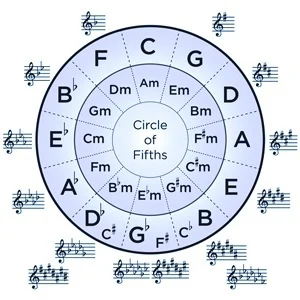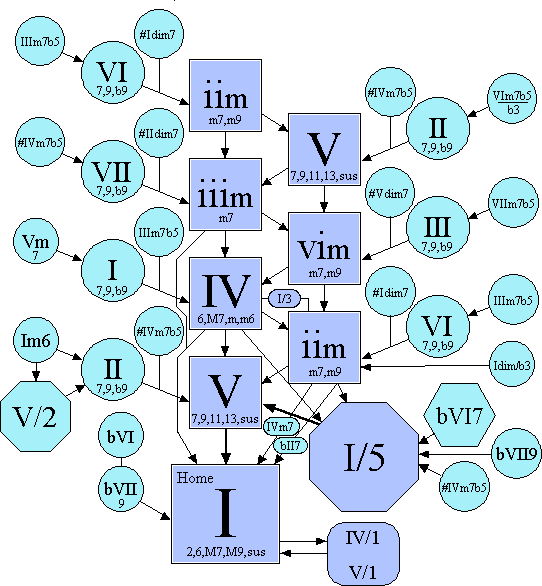Chord maps are the secret to the musical universe. All musicians face a set of similar challenges when it comes to writing chord progressions.
We’ve already provided a shortcut on musical key characteristics, which helps you match specific emotions to certain keys to achieve the feeling you’re looking for in your song. But what about after that?
You still need a chord progression or two for your song! These chord diagrams make it simple to choose your starting point and travel along in any way you like until the progression resolves back at the root.
The Old Ways of Finding Chord Progressions
You’ve likely been down this route before. There’s a lot of advice out there and while it’s not bad advice it’s just confusing, especially for those who haven’t mastered music theory.
We aren’t all using classical notation on paper and figuring out which chords can match our specific inversions and then checking to see where they naturally resolve next. Nor do we know how to bounce our way around the Circle of Fifths.

The easiest method is to find a song that has the feeling you like and to yank the chord progression from it. The problem with this is you end up sounding like everyone else, because even professional releases are doing this in order to produce a sense of familiarity.
That’s not necessarily what you want when you’re on your way up the ladder. Especially since it’s all usually pretty basic progressions. You don’t want to come off as an amateur or a copy cat.
So what’s the solution that’s not insanely complicated?
Chord Maps
The absolute best way is to use chord maps. You can follow along a generalized map for all musical keys, or you can use one relabeled specifically for the key you’re writing in. I recommend getting comfortable with the generalized one:

That looks scary at first. If you want to simplify it until you familiarize yourself with it, don’t worry about the green bubbles around the outside and just focus on the big blue ones. The only risk with only using the big blue boxes is all of your songs will start to sound like other existing songs and like each other after a while.
It works like this…
Choose any chord and then follow the arrows in whatever direction you like until you land on the home chord.
By the time you add in the outside bubbles and start playing with some of the chord inversions and adding the suspended chords, etc. you’ll see that the options are nearly endless and they all sound good. Now you’ll never fall into the realm of copy-cat land where everyone’s writing the exact same song over and over again.
The best part is that you’re going to expand your instrumental repertoire. Your skill level will increase as you learn how to play all these chords from memory. This will speed up your ability to memorize other songs too.
Eventually you’ll memorize this chart and start whipping out progressions out of mid-air. Your band mates are going to think you’re a music theory genius.
But the truth is you’re just a chart savant! But they don’t need to know our little secret… Have fun!